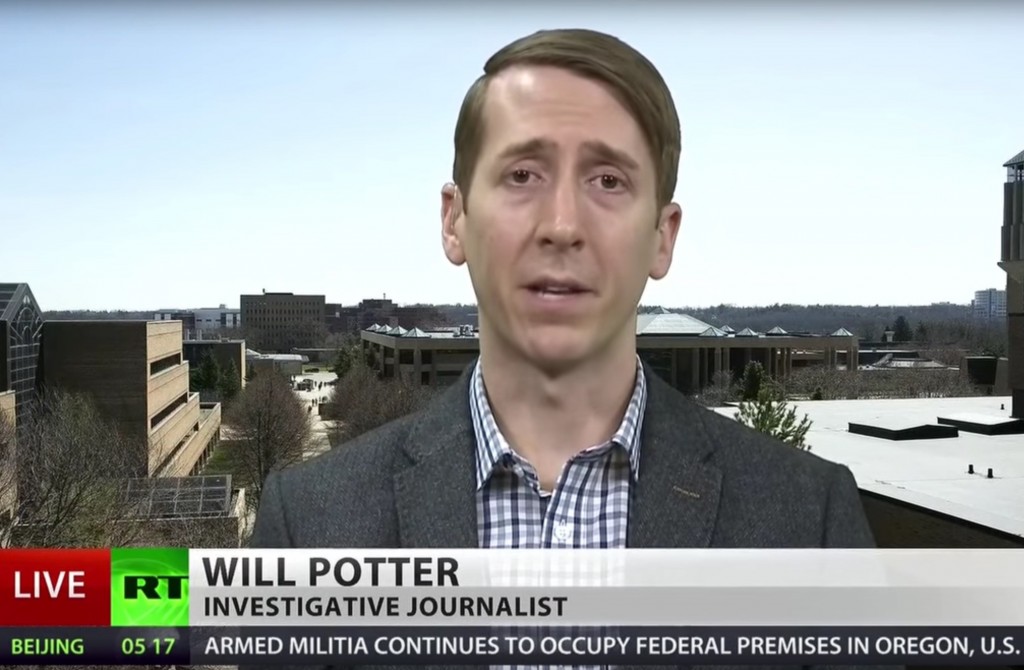 In a recent TV interview (below), I was asked to discuss how the mainstream media has been covering the militia standoff in Oregon, as heavily-armed Bundy gang members occupy federal land.
In a recent TV interview (below), I was asked to discuss how the mainstream media has been covering the militia standoff in Oregon, as heavily-armed Bundy gang members occupy federal land.
We didn’t have much time to go into all the details, so I wanted to elaborate here, with what I think are six of the most important lessons we should be learning from how the government and the press have treated militia groups like this one.
1.) Unarmed black men (and children) are viewed as more dangerous than armed white militias.
I think this is glaring to most reasonable viewers, but it has largely gone unmentioned in media coverage of the standoff. Tamir Rice was shot and killed by police, just seconds after they arrived on the scene, because he was playing with a toy gun. Media commentators searched for any possible explanation of why the police did this, rather than directly address endemic police violence; with the Oregon militia, media commentators have searched for any possible explanation as to why they should not be confronted by police, rather than directly address the rapid growth of far-right paramilitary groups.
When Black Lives Matter wanted to protest at the Mall of America, the police and legal response was swift. When a white militia occupies federal land, with guns, the law enforcement response has been extreme only in its restraint.
2.) Damaging corporate property is a greater threat to society than harming human life.
It’s ironic that this standoff is taking place in Oregon, which was once a hotbed of radical environmental activism. Groups like the Earth Liberation Front destroyed property, but never took up guns. Members of the ELF were sentenced to prison as terrorists, and even ended up in experimental prisons called Communications Management Units.
The FBI has consistently labeled environmental and animal rights activists, who have broken the law in the name of protecting life, as the “number one domestic terrorism threat” while ignoring the violence of militias and anti-abortion extremists. The only possible explanation we can distill from this is that law enforcement has prioritized threats to corporate property as worse than threats to human life.
3.) Right-wing militia activity is surging, but it’s treated as an aberration.
As I’ve reported previously, right-wing violence has increased 400% since the 1990s, according to West Point researchers. (And here is a great summary of the current situation, by Spencer Sunshine). Yet whenever it occurs, it is overwhelmingly treated as an aberration. Violence against abortion providers, violence against Muslim, violence against gays — it’s depicted as a one-off crime (or “tragedy,” at best) rather than the inevitable outcome of an ideological movement that has praised these tactics for decades.
By contrast, FBI training presentations reveal that law enforcement regard the entire animal rights and environmental movements as a threat.
4.) Language always defines the debate.
When unarmed black men are murdered by police, they are described as “thugs.” So are their communities and other concerned citizens, when they take to the streets in Ferguson, Baltimore, and around the country. That language never appears in discussions of white militia members. As one CNN analyst said, white militia members aren’t really a threat because they are not looting.
5.) White people with guns aren’t “real terrorists.”
#YallQaeda, #VanillaISIS, #YeeHawd. The hashtags about white militants have been clever (and so has the response to their call for snacks). But why are those hashtags, and liberal media commentary about the militia, so humorous? They play off of the unspoken, racist belief that these white militants are not “real terrorists.” So who are the real terrorists? Why, Muslims of course!
IÂ appreciate the joke (I’m not going to lie, #VanillaISIS cracked me up) but playing off of those stereotypes only reinforces discriminatory law enforcement priorities, and discriminatory media representations of Muslim people.
6.) We need a better response than “they’re terrorists, too!”
Some liberals have taken note of how the word “terrorism” has not appeared in most media discussions of the Oregon standoff, and called on both journalists and the government to treat the militia as such.
But that isn’t going to get us anywhere.
Labeling more and more groups as terrorists only further expands post-9/11 police, surveillance, and prosecutorial powers. It might feel vindicating to see your opponents labeled as terrorists, but it doesn’t address these misplaced government priorities, it doesn’t address skewed media representations, and it doesn’t make us safer.
The media have failed to accurately describe the militia (they are not “peaceful protestors,” “occupiers,” or “militants“). But the answer is not to err on the opposite end of the spectrum, and label more and more things as terrorism. We need to exercise restraint in how that incredibly powerful language is being used, while at the same time demanding accountability and oversight of police power.